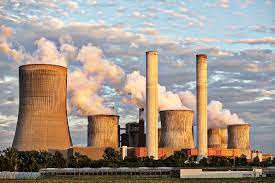In today’s fast-paced, digitally driven world, the power generation sector stands at a crucial crossroads. While the demand for reliable and efficient energy continues to rise, many power stations are still reliant on outdated information technology (IT) systems. These aging systems not only hinder operational efficiency but also pose significant risks to the reliability and security of our power infrastructure. This article explores the critical need to modernize IT in power stations and the benefits it can bring.
The State of IT in Power Stations
Many power stations, including coal, natural gas, and nuclear plants, were built decades ago when digital technology was in its infancy. These facilities often rely on antiquated IT systems that are incompatible with modern software, lack essential cybersecurity features, and suffer from chronic maintenance issues. Here are some of the key challenges associated with outdated IT systems in power stations:
- Inefficiency: Outdated IT systems are less efficient in terms of data processing, monitoring, and control. This inefficiency can lead to suboptimal energy production, increased downtime, and higher operational costs.
- Cybersecurity Vulnerabilities: Older IT systems are more susceptible to cyberattacks due to their outdated security protocols. They lack the advanced threat detection and prevention mechanisms required to defend against modern cyber threats.
- Data Integration: Modern power stations require seamless integration of data from various sensors, devices, and systems. Outdated IT systems often struggle to handle the complexity of data integration, limiting the station’s ability to make informed decisions.
- Maintenance Challenges: Obtaining spare parts and technical support for legacy IT systems can be challenging and costly. Frequent breakdowns and extended downtime become common issues.
- Regulatory Compliance: Many power stations are struggling to meet evolving regulatory requirements, which often demand modern IT systems for data reporting, environmental monitoring, and safety.
The Benefits of Modernization
- Enhanced Efficiency: Upgrading IT systems can significantly improve operational efficiency. Real-time data analysis, predictive maintenance, and process automation can optimize energy production and reduce costs.
- Cybersecurity Resilience: Modern IT systems incorporate robust cybersecurity measures, protecting power stations from potential cyber threats. This ensures the safety and reliability of critical infrastructure.
- Data-Driven Decision-Making: Advanced analytics and data visualization tools enable power station operators to make informed decisions, improving overall performance and safety.
- Reduced Downtime: With predictive maintenance capabilities, power stations can identify and address equipment issues before they lead to costly breakdowns and downtime.
- Environmental Compliance: Modern IT systems can facilitate accurate and timely reporting of environmental data, helping power stations meet stringent regulatory requirements.
- Integration and Scalability: Upgraded IT systems are designed to be scalable and compatible with emerging technologies. This flexibility allows for the easy integration of renewable energy sources and grid modernization efforts.
Challenges and Considerations
Modernizing IT in power stations is not without its challenges:
- Cost: The initial investment in upgrading IT systems can be substantial, and power station operators must carefully weigh the long-term benefits against these costs.
- Downtime: The modernization process may require downtime, which can impact energy production. Planning and scheduling are essential to minimize disruptions.
- Staff Training: Power station personnel need training to operate and maintain the new IT systems effectively.
- Legacy Equipment: Integrating modern IT with legacy equipment may require additional investments and technical expertise.
Conclusion
The need to modernize IT in power stations is undeniable. Outdated systems not only hinder efficiency but also jeopardize the security and reliability of our energy infrastructure. The benefits of modernization, including improved efficiency, enhanced cybersecurity, and compliance with evolving regulations, far outweigh the challenges and costs associated with the upgrade. As we transition to a more sustainable and digitally connected energy future, investing in modern IT systems is a critical step toward ensuring a reliable and resilient power supply for generations to come.
